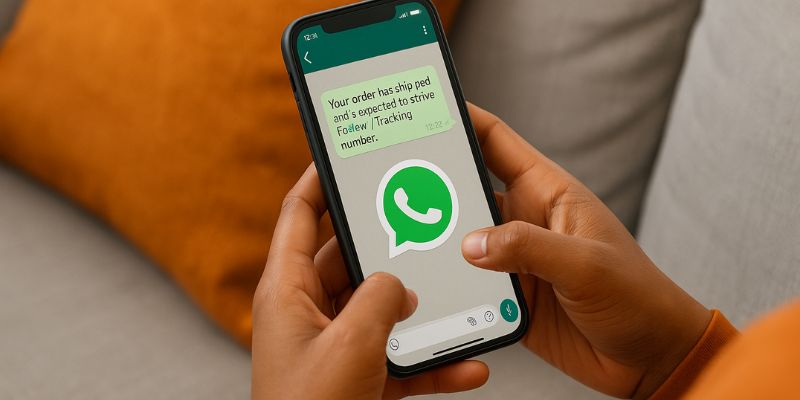How to Use WhatsApp to Send Customer Updates
In today’s fast-paced digital world, businesses are constantly seeking effective communication channels to keep their customers informed and engaged. WhatsApp, with its widespread usage and accessibility, has emerged as a powerful tool for businesses to send customer updates. This article explores how businesses can leverage WhatsApp to enhance their customer communication strategy, providing detailed insights and practical steps to optimize its usage.
Understanding the Power of WhatsApp for Business Communication
WhatsApp boasts over two billion active users worldwide, making it one of the most popular messaging platforms globally. Its simplicity, ease of use, and multimedia capabilities have made it a preferred choice for personal and business communication alike. Businesses can tap into this extensive user base to send timely and relevant updates to their customers, enhancing engagement and customer satisfaction.
Benefits of Using WhatsApp for Customer Updates
- Instant Delivery: WhatsApp messages are delivered instantly, ensuring that customers receive updates in real-time. This immediacy is crucial for time-sensitive information, such as order confirmations or appointment reminders.
- High Open Rates: Messages on WhatsApp generally have higher open rates compared to emails or SMS, increasing the likelihood that your updates will be seen by customers.
- Rich Media Support: WhatsApp supports various media formats, allowing businesses to send images, videos, and documents, enriching the customer experience with more engaging content.
- Direct Engagement: WhatsApp facilitates direct two-way communication, enabling customers to respond to updates and engage with businesses in real-time.
Steps to Effectively Use WhatsApp for Sending Customer Updates
To successfully use WhatsApp for customer updates, businesses need to follow a structured approach, ensuring messages are timely, relevant, and personalized.
- Step 1: Set Up a Business Account: Begin by setting up a WhatsApp Business account. This specialized app provides tools to create a business profile, including details like address, business hours, and website, helping customers recognize your business.
- Step 2: Build a Customer Contact List: Gather customer contact information with their consent. Encourage customers to opt-in for updates through sign-up forms on your website or during in-store visits, ensuring compliance with data protection regulations.
- Step 3: Segment Your Audience: Categorize your customers based on their preferences, demographics, and purchase history. This segmentation allows for tailored messaging, ensuring updates are relevant to each customer group.
- Step 4: Craft Compelling Messages: Create concise and engaging messages that deliver value to your customers. Use clear language and include call-to-action prompts to encourage further interaction.
- Step 5: Schedule and Automate Messages: Utilize WhatsApp Business API to automate and schedule messages. This ensures consistent communication and frees up resources for other business activities.
- Step 6: Monitor and Analyze Performance: Track the performance of your updates using analytics tools. Monitor metrics like open rates, response rates, and customer feedback to refine your strategy and improve future communications.
Examples of Effective Customer Updates on WhatsApp
To illustrate the potential of WhatsApp for customer updates, consider the following examples:
- Order Confirmation and Tracking: Upon purchase, send customers an order confirmation message with tracking information. This reassures customers and keeps them informed about their order status.
- Promotional Offers and Discounts: Inform customers about exclusive promotions or discounts through personalized messages, encouraging increased sales and customer loyalty.
- Appointment Reminders: For businesses in the service industry, sending appointment reminders helps reduce no-shows and ensures better schedule management.
Challenges and Considerations
While WhatsApp offers numerous benefits, businesses must be mindful of certain challenges:
- Privacy Concerns: Ensure compliance with privacy regulations such as GDPR by obtaining customer consent before sending updates.
- Message Overload: Avoid overwhelming customers with excessive messages. Maintain a balance between keeping customers informed and respecting their communication preferences.
Conclusion
WhatsApp is a powerful tool for businesses to send customer updates, offering instant delivery, high engagement rates, and rich media support. By setting up a business account, segmenting audiences, and crafting compelling messages, businesses can enhance customer communication and satisfaction. While challenges like privacy concerns and message overload exist, they can be managed with careful planning and execution. Embracing WhatsApp as a communication channel can significantly boost your customer engagement strategy.
FAQs
How can I ensure my WhatsApp messages are not seen as spam?
To prevent your messages from being perceived as spam, ensure they are relevant, personalized, and infrequent. Always obtain customer consent before sending updates and provide value in each communication.
Can I automate WhatsApp messages for customer updates?
Yes, using WhatsApp Business API, you can automate and schedule messages, allowing for consistent communication without manual intervention.
What types of media can I send in WhatsApp updates?
You can send a variety of media types, including text, images, videos, and documents, enriching the customer experience with dynamic content.
Is it necessary to segment my customer list for WhatsApp updates?
Segmentation allows for personalized messaging, ensuring updates are relevant to each customer group, which can enhance engagement and response rates.
What are the potential risks of using WhatsApp for business communication?
Potential risks include privacy concerns and the possibility of overwhelming customers with messages. It’s crucial to handle customer data responsibly and maintain a balance in communication frequency.
